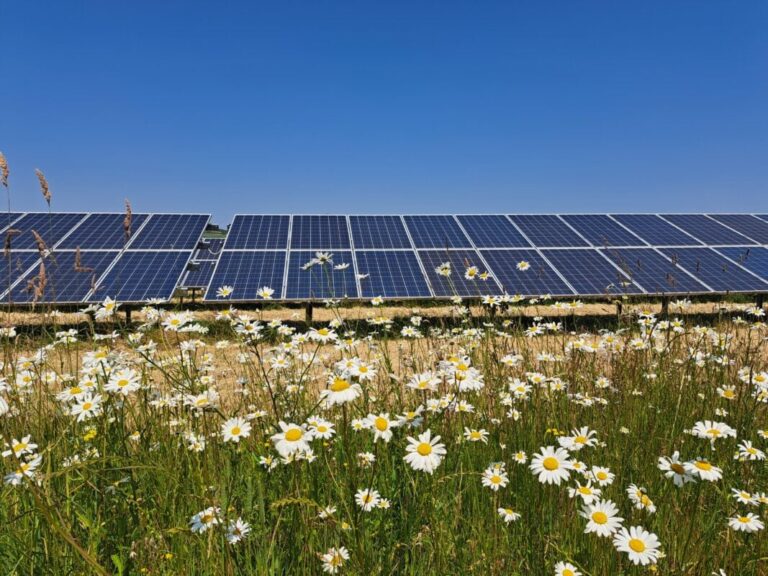Renewable energy developer RES has submitted its planning application for a 49.9MW solar PV project on the same site as energy storage.
The Beane Solar Farm project, located west of Cottered in Hertfordshire, will include energy storage in addition to the solar panels, although the battery energy storage system (BESS) capacity is not given. The building application does not include a grid connection; It is expected that the solar PV installation will be connected to the existing electricity lines that cross the site.
According to RES, the final design of the development was shaped by feedback from stakeholders and the local community, with all solar infrastructure removed from a southwestern part of the site. This area will now be used to establish skylark plots. RES also moved infrastructure further from adjacent properties to the south of the site, following community feedback.
The site is predicted to have a net biodiversity gain of 98.40% in habitat units, 189.90% in hedgerow units and 10.19% in watercourse units. The site is also designed for dual use with agricultural grazing; As a result, and due to the “temporary” nature of solar projects, it is concluded that the Beane Solar Farm would not cause significant loss of agricultural land.
Jonny Wilks, Development Project Manager for RES said: “One of the key points raised during the local consultation on this project was the need for natural screening and biodiversity. We are pleased to be able to propose a plan that not only continues to support agricultural use, but is also expected to deliver significant biodiversity benefits in addition to clean, low-cost energy generation.”
According to RES, ‘careful landscape design’ includes the addition of wildlife corridors, native hedgerows and wildflower meadows.
Centering biodiversity in solar energy development
Although the solar industry in Britain continues to demonstrate that solar power stations do not negatively impact biodiversity, it is a major concern of local communities when developers bring forward plans.
Like RES, Elements Green has made biodiversity and agricultural voltaics a key focus in the development of its latest large solar power plant. It recently renamed the 800MW Great North Road Solar and Biodiversity Park as part of a partnership agreed with the RSPB, Sherwood Forest Trust, Nottinghamshire Wildlife Trust and the Trent Rivers Trust to ensure nature benefits from the development.
Following this, Elements Green announced that once the development comes online, which is estimated to be in 2027, a flock of almost 4,000 sheep will graze the solar farm’s fields, which could increase to 9,000 once lambing begins.


